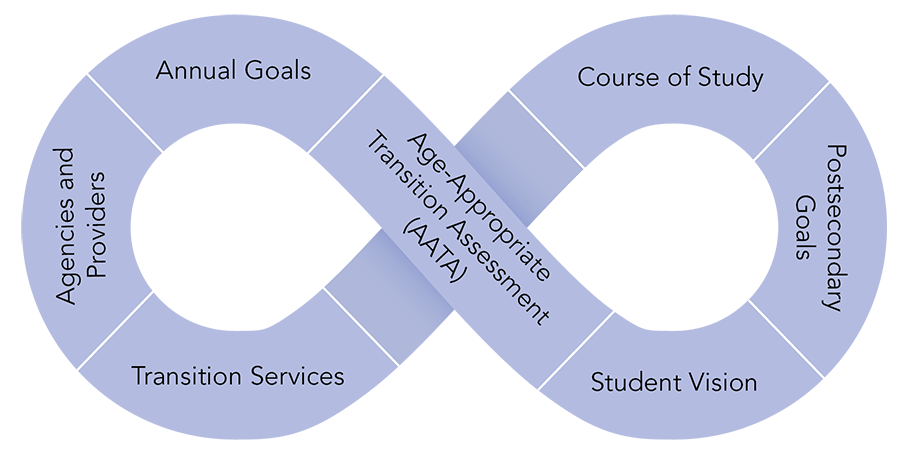Transition Planning and the IEP
Elements in IEP Transition Planning
The IEP Transition planning is intended to be a thoughtful and systematic process that, in Ohio, begins no later than age 14 with in an education team that includes other agency and community partners. While there may be variations in team methods and activities within the IEP process, the steps are the same. In reality, these steps do not occur in a linear process, but are blended and ongoing. Some steps overlap. Some are concurrent. All will require review and updating at some point. Additionally, the process is cyclic, as plans are developed, new information is discovered, revisions are made and new data are collected. However, in practice, teams will find that the lines between the steps fade and the process becomes an ongoing system of movement towards meaningful adult life.
The elements in this Transition Planning and the IEP guide will complement the IEP process, but are not necessarily the same as the sections of an IEP form. For ease of use, the critical elements highlighted in this guide are connected to the structure of the IEP form or process. However, these elements may be included in multiple sections of the IEP and multiple aspects of the process.

Key Elements to the Transition Planning and the IEP
-
Age-Appropriate Transition Assessment (AATA)
-
Student Vision
-
Post Secondary Goals
-
Course of study
-
Transition services
-
Agencies and providers
-
Annual goals